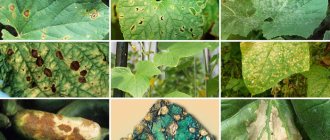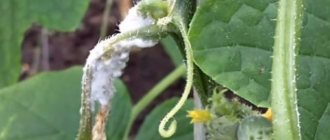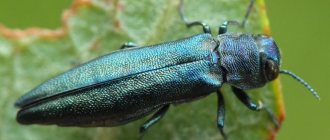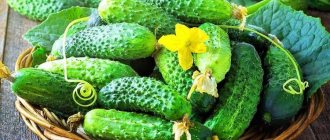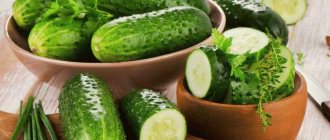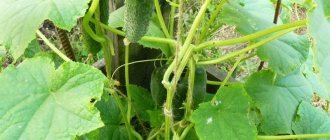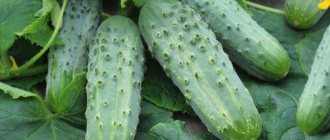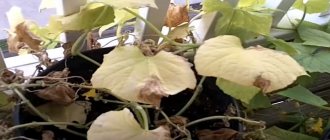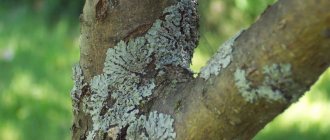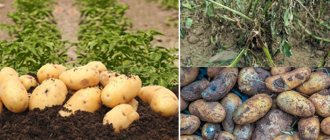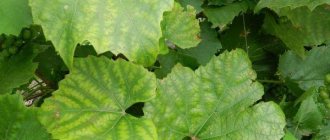Summer residents often encounter such a nuisance as cucumber diseases. Such a scourge can not only significantly reduce the quality of the crop, but also completely destroy the plants. In different climatic conditions, illnesses manifest themselves differently.
Taking into account climatic conditions, scientists develop varieties that are resistant to certain diseases. The risk is significantly reduced if, when planting, you choose varieties that are oriented to your region. Gardeners use wood ash as a preventive measure and as a fertilizer.
In the initial stages of development, symptoms go unnoticed, so it is important to regularly conduct thorough examination and prevention. The earlier a problem is detected, the easier it will be to deal with it. Proper care of cucumbers also helps to avoid illnesses.
The article discusses examples of the most common cucumber diseases with photographs. The main signs of their development. Traditional, folk methods of their treatment and preventive measures are indicated.
Causes of disease development in cucumbers
Violation of the rules of crop care and violation of agricultural practices can serve as fertile ground for the development of various diseases. These factors include:
- Insufficient or excessive watering. Excessively moist soils provoke the development of rot, while dry soils serve as a habitat for many pathogenic bacteria.
- Deficiency or excess of nutrients, macro- and microelements introduced during feeding. Both conditions are extremely harmful to the plant, reducing its immunity and susceptibility to diseases and pests.
- Poor weeding (or lack thereof). Weeds attract the attention of microbial-carrying insect pests and serve as a breeding ground for them.
- Lack or insufficient loosening. The hard crust that forms on the soil surface prevents the normal penetration of air, moisture and nutrients to the roots.
- Excessive planting density, which contributes to disruption of air exchange and the creation of conditions optimal for the development of various pathologies.
- Insufficient disinfection of the soil, equipment used, and cultivation facilities (or lack thereof).
- Poor quality treatment (or lack thereof) of pruning areas (pinching, pinching), which contributes to the spread of infections.
Such moments include the difference between night and day temperatures, as well as sudden cold snaps. These factors are not always predictable, but have an extremely adverse effect on the development of diseases, especially in combination with rain.
Difference between diseases and problems due to pests
Plants change their appearance not only because of diseases. Gardeners often confuse traces of pests with diseases:
- Spider mite . The pest sucks sap from plants, causing the leaves to dry out. The bushes are covered with cobwebs.
- Aphid . Leaves and stems become pale and limp. The ovaries fall off, but new ones are not formed. Small light green midges are found on the back of the leaf blade and stems.
- Greenhouse whitefly. Insect caterpillars suck the juices from the plant, which leads to its death. The insect feels good in conditions of high humidity. Whiteflies can be recognized by the presence of caterpillars and butterflies that resemble moths.
Prevention of cucumber diseases
Compliance with all of the above requirements is the most important preventive measures to prevent diseases. Additionally, preventive measures should include:
- Timely removal of all lifeless areas of the plant and disinfection of the cuts.
- Compliance with crop rotation rules from the point of view of predecessors:
- favorable - peas, cabbage, peppers, tomatoes, radishes, beans;
- unfavorable - watermelons, zucchini, cucumbers, pumpkin.
- Planting cucumbers in one area no more than every 4 years.
- The use of green manure plants (mustard, oats, rye, etc.) after harvesting with their further digging and embedding of seedlings into the soil.
- Use of high-quality seeds and seeding material.
- Destruction of aphids and insects that carry them.
- Remote planting of cucumbers from:
- watermelons and melons (common pollinating insects);
- garden flowers, the sweet juice of which serves as a breeding ground for aphids.
Regardless of the cause of the lesion, all diseased crops must be removed and destroyed, followed by appropriate treatment of the area. In case of mild infection, the affected areas are trimmed and the cut areas are treated with disinfectant solutions.
How to determine the disease
For correct and timely control, you need to know exactly what caused the cucumbers to become ill. This can be done by external signs.
Alternaria (dry spotting)
Identified by brown formations on the leaves. At first, the edges suffer, then the spots spread over the entire surface, and the leaves dry out.
The disease clearly appears on the foliage in the form of brown spots.
Spotting begins on the lower leaves. Then the spotting spreads upward. The cucumbers themselves and the stems remain apparently healthy.
Alternaria often affects fruits that grow near the doors of greenhouses, as they are more susceptible to temperature changes.
Too warm air combined with high humidity leads to the rapid development of negative consequences.
Powdery mildew
Signs:
- the leaves turn white below and above;
- spots cover the entire area of the affected leaves;
- later it starts to get dark.
You can notice powdery mildew damage on the leaf.
Causes:
- irrational watering;
- Excessive fertilizing with nitrogen.
Powdery mildew can be seen on cucumbers in greenhouses and in open ground.
If the fight is not started in time, the leaves will become deformed and die. Later, the entire lash will be defeated. Fruit set stops, the harvest stops, and the bush dies.
Anthracnose (scarden)
Visual signs: the appearance of red spots on the foliage, vines and on the fruits themselves. At the next stage, ulcers appear on the green leaves, and holes form on the diseased leaves.
This disease of cucumbers is clearly visible due to the characteristic spots on the leaves.
The pathogenic fungus thrives in high humidity conditions and quickly spreads from one plant to another.
Cucumbers are susceptible to this infection at any stage of their development.
Ascochyta blight
How to determine: with ascochyta blight (black stem rot), the edges of the leaves first lighten and become covered with white spots. Gradually their entire area is affected.
In addition to the leaf blades, cucumbers darken and become covered with dark dots, and the stems become brown.
Most often, black stem rot affects greenhouse crops. Interestingly, the plant continues to bear fruit, but the cucumbers become unsuitable for food.
Cladosporiosis
If darkish spots with an olive-gray tint become noticeable on cucumber leaves, then this is cladosporiosis or olive spot.
Cladesporiosis is also called olive spot because of the olive-colored spots that form.
As with anthracnose (sedip), torn holes form on the foliage, and ulcers form on cucumbers. The tissues die and the fruits become unfit for food.
Humidity (more than 80 percent) promotes the development of the disease.
White rot
The so-called white rot affects stems and green plants. The disease is expressed in a white fluffy coating. The risk of getting sick is higher in greenhouse cucumbers and beds that are located near lettuce and parsley.
White rot is very dangerous. It is capable of destroying the entire harvest of greens
The fungus multiplies incredibly quickly and can destroy entire plantings.
The disease is caused by violations of growing rules - thickened beds, dead parts of plants not removed. Infection can occur through an instrument that has contracted the fungus.
Root rot
Root rot can be noticed by drying and thinning stems. The leaves also dry out, and the roots become covered with brown spots.
Recognizing root rot is not always easy. The mistake is that many gardeners try to additionally water the garden bed, but this only speeds up the process of death. Excess moisture leads to active growth of fungus.
The roots rot, and the cucumbers grow crooked and lag behind in development. This often leads to complete loss of the crop.
Fusarium wilt
The disease is characterized by wilting of bushes during the day. At night they freshen again and turn green.
Fusarium infection usually causes the plant to wilt
Fusarium wilt is transient. The leaves on the vines turn yellow, the plant dries out and dies.
The main cause of the disease is infected seeds. Cucumbers grown outside greenhouses are often infected.
Read more information on our website:
Fusariosis of cucumbers: symptoms of the disease, prevention and treatment Nikolay Golubev (Dachny website)
Downy mildew or downy mildew
Downy mildew is a serious cause for concern. Downy mildew manifests itself as light yellow spots on the top of the leaves. At the same time, you can see a purple coating below.
Peronosporosis is a dangerous fungal disease
Rainy and cold weather with temperature changes are factors that can contribute to the additional spread of the fungus. Cold watering is also harmful.
Plant death occurs after about 14 days.
Rhizoctoniosis
With rhizoctonia, cucumber fruits become covered with a black fungus. The leaves become covered with brown spots.
Greenhouse and ground cucumbers suffer from rhizoctonia. The disease is especially dangerous at the beginning of the growing season.
Causes
The disease is provoked by too dense planting and excessive watering.
Black mold
This is what is called a “burn” of leaves. Small dark spots merge and absorb healthy tissue. Spread occurs quickly throughout the above-ground part.
The development of infection begins with old leaves, so it is very important to remove them in a timely manner.
Bacteriosis
Another name for bacteriosis is angular leaf spot. Cucumbers, flowers and leaves become covered with unpleasant brown spots. Hence the name.
Bacteriosis is most common among greenhouse cucumbers.
Subsequently, in place of the spots, a cloudy liquid forms, and only veins remain on the foliage. The cucumbers shrivel and ulcers form on them.
Data
Bacteriosis most often affects greenhouse tomatoes.
Hot weather with heavy rain and excessive watering provoke this disease.
Wet bacterial rot
Dark green watery spots can be seen on cucumbers. Bacterial rot causes infected leaves to turn brown, stems soften, and cucumbers leak liquid.
- The fruits are not suitable for eating. The bushes bloom profusely, but set very poorly.
- The disease spreads during the entire growth period.
- Infection usually comes from diseased seeds or from rotten waste that has not been removed from the beds.
Common mosaic virus (cucumber mosaic virus)
When suddenly the cucumber leaves begin to curl and the fruits become covered with colored spots, it’s time to take urgent action. This “mosaic” usually appears on cucumbers after an unexpected temperature change.
It is important to know
Common mosaic spreads through contaminated soil. It is dangerous for many other vegetable crops in the garden.
Spider mites on cucumbers
Mites primarily live on the underside of leaves. They entwine them with a thin web and suck the juice out of them. First, whitish dots form on the leaves, then they become larger, turning into spots. Eventually the leaves turn yellow and dry out.
Spider mites on cucumbers
Control measures
Fight weeds
- Destroy plant debris.
Active measures
Use Kleschevit, Fitoverm, etc. When spraying, pay special attention to the underside of the foliage.
Fusarium wilt of cucumbers
A dangerous fungal disease that penetrates through the root system. The spores affect the vessels, which leads to the rapid death of the entire bush. Fusarium appears during flowering and fruiting of the crop. During the daytime, the apical leaves wither; in the evening, turgor is restored. The disease can be determined by cutting the stem: if the vessels are brown in color, the cucumbers are infected with a fungus.
Another sign of Fusarium wilt is a change in the color and structure of the stem at the root collar. The tissues become brown and gradually become thinner. A diseased plant sheds its ovaries.
Fusarium can be cured only in the first days after symptoms are detected. It is better to remove diseased bushes from the greenhouse, and spray the rest of the cucumbers against the disease with Quadris. Folk remedies and biological products are effective only as prevention.
Soaking planting material in a Fitosporin solution, using disinfected soil for cucumber seedlings and sanitizing the greenhouse will prevent the development of the disease.
Cucumber mosaic
A viral disease, the pathogens of which are found in the soil and are activated by a sharp increase in temperature from 28-30 ° C, differences in night and day indicators. There are several similar diseases: green mottled mosaic, common and white cucumber. An ordinary mosaic can be identified by its appearance:
- yellow spots appear on the plates;
- the edges of the affected leaf bend inward;
- smaller young leaves are formed;
- in the late stage, cracking of the stem occurs;
- the plant produces barren flowers.
Green speckled mosaic differs in appearance:
- leaves become wrinkled;
- the color of the veins on the plates becomes lighter;
- the plant stops growing;
- cucumbers become deformed and acquire a bitter taste;
- Light spots appear on the peel.
Mosaic easily spreads in the wind, along with contaminated tools or gardener's shoes. In open ground, one of the carriers is aphids. Bacterial diseases of cucumbers are practically untreatable. If signs of damage are detected, it is recommended to take the following steps:
- dig up and burn diseased cucumber bushes;
- increase the humidity in the greenhouse using containers of water;
- lower the temperature below 27 °C;
- sprinkle the soil in the beds with wood ash;
- spill the soil with a pink solution of potassium permanganate.
Treatment of cucumber diseases is quite a painstaking task. Gardeners try to prevent the spread of viruses and fungi by taking preventive measures. General rules of prevention include planting healthy seeds, disinfecting the land and maintaining crop rotation. Particular attention should be paid to cucumber beds during periods of prolonged rains and sharp temperature fluctuations. To protect cucumbers from fungal diseases, it is recommended to plant resistant varieties, both for open ground and for greenhouses.
Aphids on cucumbers
The shoots become bent and growth slows down. The leaves are wrinkled. Small insects sit in clusters on the tops of shoots and on the undersides of leaves.
aphids on cucumbers
Measures to combat aphids on cucumbers
Prevention
- Pull out the weeds.
- Follow agricultural practices when caring for crops.
Active measures
Spray with insecticides Biotlin, Biotlin BAU, Fitoverm.
Gray rot of cucumbers
A common fungal disease of many vegetable crops (pathogen Botrytis cinerea). At the same time, large brown spots form on the leaves, and the shoots rot. At high humidity, fruits become covered with brown, growing wet spots with a moldy gray coating.
Measures to combat gray mold
Prevention
- Do not thicken the crops.
- Maintain optimal temperature and humidity conditions.
- When watering, avoid getting water on the plants.
Active measures
Sprinkle the affected areas with crushed charcoal or ash. If the effect is insufficient, treat the plants with fungicides. If the disease progresses, cut off heavily affected shoots and destroy plant debris.
What folk remedies can you use to process cucumbers?
Ready-made mixtures and dry fertilizers prepared according to folk recipes for treating cucumbers are passed down from generation to generation. They use affordable components found in every home.
Processing cucumbers with ash solution
Ash is a well-known fertilizer, rich in potassium, calcium and magnesium, used by gardeners to feed many garden crops.
In addition to improving the soil structure and providing the bush with the necessary elements, ash has bactericidal properties. Ash-based solutions provide significant assistance in the fight against fungal diseases of cucumbers. Powdery mildew and root rot can be successfully treated in the early stages.
Soap solutions of ash are effective against aphids and other insects that parasitize cucumbers. Scattered ash under the bush prevents the spread of slugs.
To prepare an ash solution according to a folk recipe, 5 cups of purified ash are stirred in a bucket of water and left for 2 to 5 days. If necessary, add grated soap to the resulting mixture.
How to use garlic solution to process cucumbers
Garlic is known for its medicinal properties and is widely used when it is necessary to treat cucumbers and the soil under them against a wide variety of diseases. And it doesn’t matter what exactly the disease is caused by: bacteria, viruses or parasitic insects.
Phytoncides, sulfur compounds and sulfides contained in garlic in large quantities have bactericidal, fungicidal and parasitic properties. They effectively help in the treatment of downy mildew.
REFERENCE. Many pests cannot stand the aroma of garlic infusion. For example, slugs, aphids, spider mites, etc.
Garlic infusion is used to treat bushes against pathogenic microorganisms.
The recipe is:
- 50 g of chopped garlic is poured into 0.5 l. hot water.
- Leave to brew for a day.
- The resulting mixture is filtered and diluted with water in a ratio of 1:1.
- Sprinkle the prepared solution on cucumbers 2-3 times a week in the evening.
ON A NOTE. To combat pests, add 0.5 liters of chopped garlic. vegetable oil. Add a few tablespoons of liquid soap to the resulting mixture. The solution is infused for a day, after which it is filtered and diluted 1:10. Treat the bushes several times a week until the parasites completely disappear.
How to use tobacco solution to process cucumbers
Tobacco dust contains easily digestible forms of nitrogen, potassium, and phosphorus, necessary for the normal development of the cucumber bush. Nicotine, a toxic substance for living organisms, provides antiparasitic, insecticidal and bactericidal properties to tobacco. Using infusions, decoctions and dry dust, gardeners protect cucumber beds from most pests and pathogenic organisms.
- Powdering with tobacco dust is carried out in dry, windless weather and in greenhouses. This method is successfully used in the fight against caterpillars, leaf rollers and aphids. Pollination of the root zone protects against slugs and ants.
- Spraying with tobacco infusions and decoctions gives a prolonged result. The effect lasts for several weeks. Recipe for making an infusion: 1 glass of tobacco pour 5 liters. hot water and leave for 2 days. Add 1 tbsp to the prepared solution. liquid soap. When making a decoction, tobacco dust is added to boiling water and boiled for half an hour. The cooled concentrate is diluted 1:2.
- Fumigation of cucumbers is carried out in greenhouses and outdoors in dry weather. Tobacco powder is added to the burning wood chips and the smoke is directed into the plantings.
IMPORTANT! Remember that nicotine is also toxic to humans. When working with this substance, you must protect your respiratory system.
Recipes with cucumber serum
Whey, a by-product when making homemade cottage cheese or cottage cheese, is rich in microelements, amino acids and vitamins. Lactic acid bacteria suppress the development of pathogenic microorganisms, protecting cucumbers from diseases.
The serum is used for spraying the lower leaves or root watering of cucumber bushes.
- Treatment with the solution helps well against powdery mildew, fusarium, root rot, late blight, and downy mildew.
- You can use the whey to make traps when you need to get rid of pests. To do this, leave the partially open container with the serum overnight.
- Spraying with the addition of laundry soap helps well in the fight against aphids and whiteflies.
ON A NOTE. To enhance the bacterial properties, you can add a few drops of iodine to the serum. You can feed cucumbers with a whey product throughout the entire summer season. Processing period: 10 – 14 days.
How to use iodine and milk to process cucumbers
A milk solution with the addition of iodine according to the recipe has a good effect on the development of the culture. The cucumber trunks become stronger, the leaves acquire a rich green color, and the quality of the fruit improves. The beneficial components of milk and the bactericidal properties of iodine contribute to:
- Strengthening the immune system.
- Providing necessary elements and vitamins.
- Protection against powdery mildew, bacteriosis, mosaic.
For prevention, adult cucumbers, seeds and cucumber seedlings can be treated with this solution. This helps cucumbers resist various types of rot, fungal parasites, bacterial and viral diseases.
Solutions with brilliant green for processing cucumbers
Zelenka contains microelements important for the development of cucumbers. The bactericidal properties of copper protect cucumbers from many types of diseases.
Treatment with a solution of brilliant green is useful for specimens grown in swampy, copper-poor soil. It prevents rotting processes, protects against yeast fungus, scab, putrefactive bacteria, powdery mildew and downy mildew, and late blight.
It is important to prepare the solution correctly.
According to the recipe, for preventive treatment, dilute 1 ml of brilliant green in 1 liter. water. To treat bushes with obvious signs of disease, 1 liter is needed. take 5 ml of brilliant green. Severely affected areas can be lubricated with a concentrate of 20 ml per 1 liter.
Powdery mildew
A common fungal disease manifests itself as a white, sometimes reddish powdery coating on the upper side of the leaves. In the early stages, it appears as individual spots located predominantly on the upper side of adult leaves. After some time, the plaque spreads to the reverse side, captures young leaves, and the powdery spots merge, covering the entire leaf. Severely affected leaves die. The disease can also affect the stems, causing them to dry out, and the fruits, which because of this lose their keeping quality and taste.
cucumbers affected by powdery mildew
Powdery mildew on cucumber leaves
Causes of powdery mildew on cucumbers
Powdery mildew is the main disease of cucumbers in amateur greenhouses, since their microclimate is most often favorable for the development of microscopic pathogenic fungi. High air humidity, temperature changes, poor ventilation, dense plantings, and water getting on leaves when watering are risk factors for the development of powdery mildew. The likelihood of disease increases if the plants in the greenhouse are overfed with nitrogen fertilizers. Cucumbers grown in open ground are less susceptible to powdery mildew. Watering with cold water has a negative effect on plants and increases their susceptibility to powdery mildew. Powdery mildew develops most actively at temperatures of +18...+20 °C, so in cool and humid summers the likelihood of the disease increases significantly.
Measures to combat powdery mildew
Prevention
- Choose resistant cucumber varieties.
- In the fall, carefully clean up the greenhouse. The fungi that cause this cucumber disease can overwinter in plant debris, in the soil, and even in the structures of the greenhouse itself. After harvesting, carefully remove all residues and burn them, fumigate the greenhouse with a sulfur bomb and/or treat with copper sulfate through a sprayer.
- Try to maintain crop rotation and do not constantly grow cucumbers in the same greenhouse. If possible, alternate them with unrelated crops (such as tomatoes).
- Do not water the plants with cold water, do not allow waterlogging and water to get on the leaves.
- If possible, maintain the temperature above +20 °C - do not leave the greenhouse open at night, cover the plants in the ground with film when cold weather sets in.
Active measures
The most effective method is the use of fungicides that are active against the pathogen of powdery mildew (Topaz, Tiovit Jet) and biological products with a similar effect.
Folk remedies for powdery mildew on cucumbers
In various sources you can find “folk” recommendations for this disease of cucumbers - for example, spraying with a mixture of baking soda and laundry soap (50 g per 10 liters of water) or sour milk (1 liter of milk/1 liter of water). Practice shows that these methods have rather low effectiveness and can only help as an additional means of prevention, and not treatment of powdery mildew, especially if the disease has already seriously affected the plants.
Why do cucumber leaves turn yellow?
Most likely, the reason is the temperature difference between day and night and (or) a lack of potassium. And if in order to raise the night temperature, it is enough to simply cover the cucumbers overnight with any covering material (film, spunbond, etc.), then to cope with the second problem, you need to make a little more effort.
Spray the plants with infusion of ash . To prepare this infusion, dissolve 3 tbsp in 1 liter of warm water. spoons of ash and let it brew for 2 days.
It will be useful to feed the cucumbers with onion infusion . To prepare it, add 50 g (about 2 tablespoons) of onion peel to 10 liters of water and boil. When the infusion becomes barely warm, water the plants, spending 1 liter per 1 bush.
Pests of cucumbers in a greenhouse
In addition to fungal and bacterial diseases, greenhouse cucumbers are threatened by dangerous pests, for example, greenhouse whitefly and aphids. The latter settles in a colony on the back of the leaves and directly on the shoots, feeding on the juice of the cucumber vine, completely depleting it. In addition, it transports viral diseases on itself. These tiny (2 millimeters long) insects, marsh or black in color, with their entire colony in a short time can cause irreparable harm to the cucumber crop if timely measures are not taken to effectively combat them.
Melon aphid on cucumbers in a greenhouse
One of the common pests of cucumbers in greenhouses is the melon aphid. In order to prevent negative effects on the plants and the yield of cucumbers, it is necessary to monitor the cucumber vine every day if possible. This pest of melons and melons is also a carrier of about 50 viruses. Aphids can infect more than 330 species of agricultural plants from 25 families. The maximum infection of agricultural crops by melon aphids was observed in the first and second decades of July.
If even a small number of aphids appear, immediately take action and treat, for example, with an infusion of red hot pepper, which is prepared from 10 liters of hot water, to which 30 grams of hot pepper and 200 grams of tobacco dust are added. This solution is infused for one day, after which it must be filtered and supplemented with 3 tablespoons of wood ash, 1 tablespoon of laundry soap (preferably liquid to speed up the process). Repeated spraying with this infusion is permissible only after a week. It is necessary to spray both the entrance to the greenhouse and the path between the rows.
If assistance to borage in protecting against aphids is urgently needed, then insecticides such as “Strela” or “Inta-vir” can be used.
Why do cucumbers get sick in the greenhouse?
The main causes of disease in cucumbers in greenhouses are associated with violations of temperature and air humidity, namely with their correct ratio. The imbalance of these main indicators of the “greenhouse climate” leads to the occurrence of cucumber diseases even in greenhouse conditions.
- Errors in the application of necessary agrotechnical measures;
- Violation of the norms of natural and additional artificial lighting;
- Ignoring the rules of crop rotation, in which cucumbers are grown in the same place or after undesirable predecessors;
- Sprinkling cucumber bushes in the presence of drafts;
- Insufficient, overdose or untimely feeding of cucumbers with fertilizers with strict requirements for regular and standardized fertilizing;
- Late diagnosis of cucumber diseases and neglect to clean and remove affected parts or even the entire plant at the initial stage of the disease.
At the first signs of disease, it is better to remove the affected cucumber bush completely along with the earthen lump, followed by disinfection of the entire greenhouse.
It is important to remember that the sooner you start fighting an emerging disease in a greenhouse, the greater the chances of successful treatment and, as a result, a stable large harvest of cucumbers.
